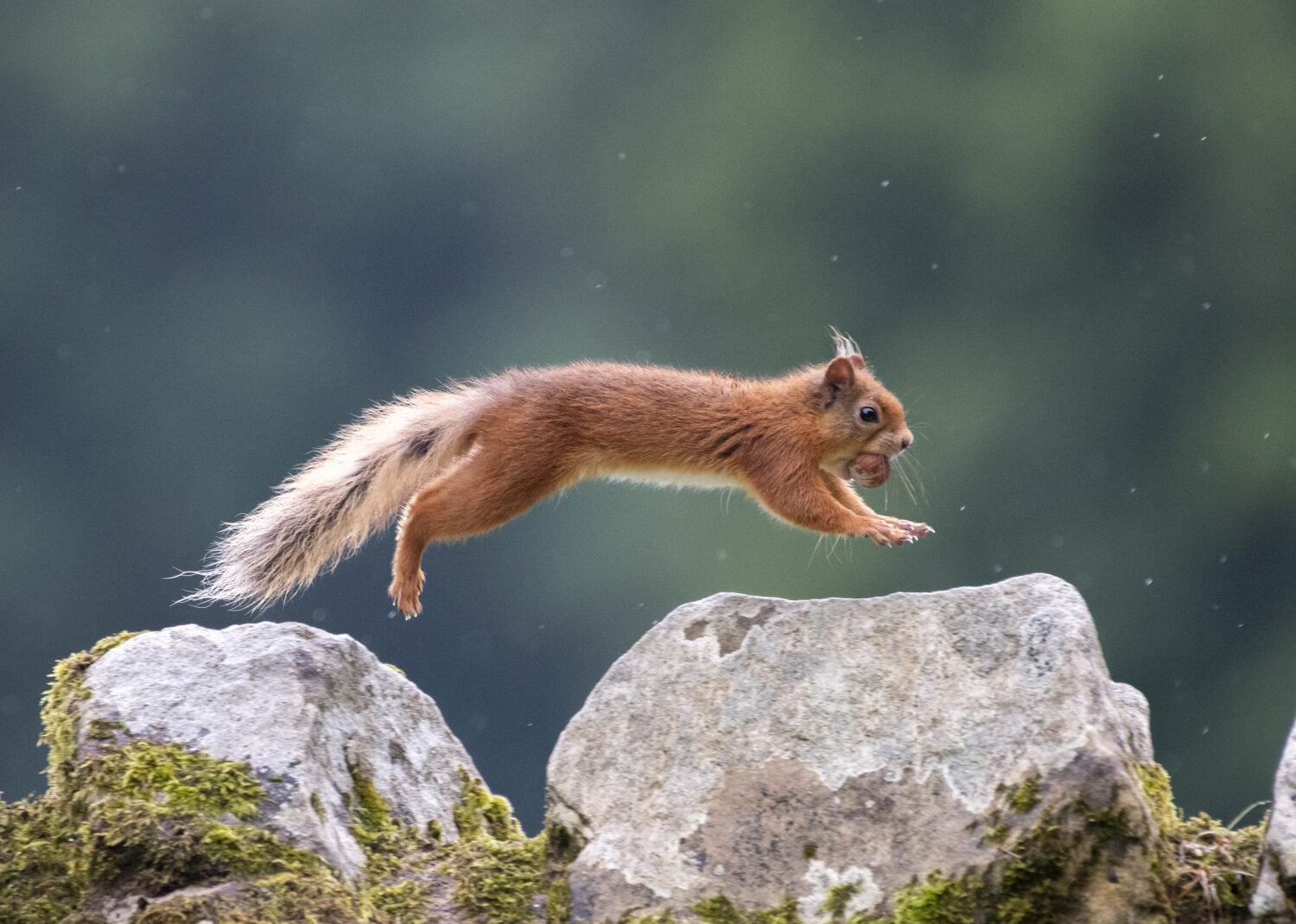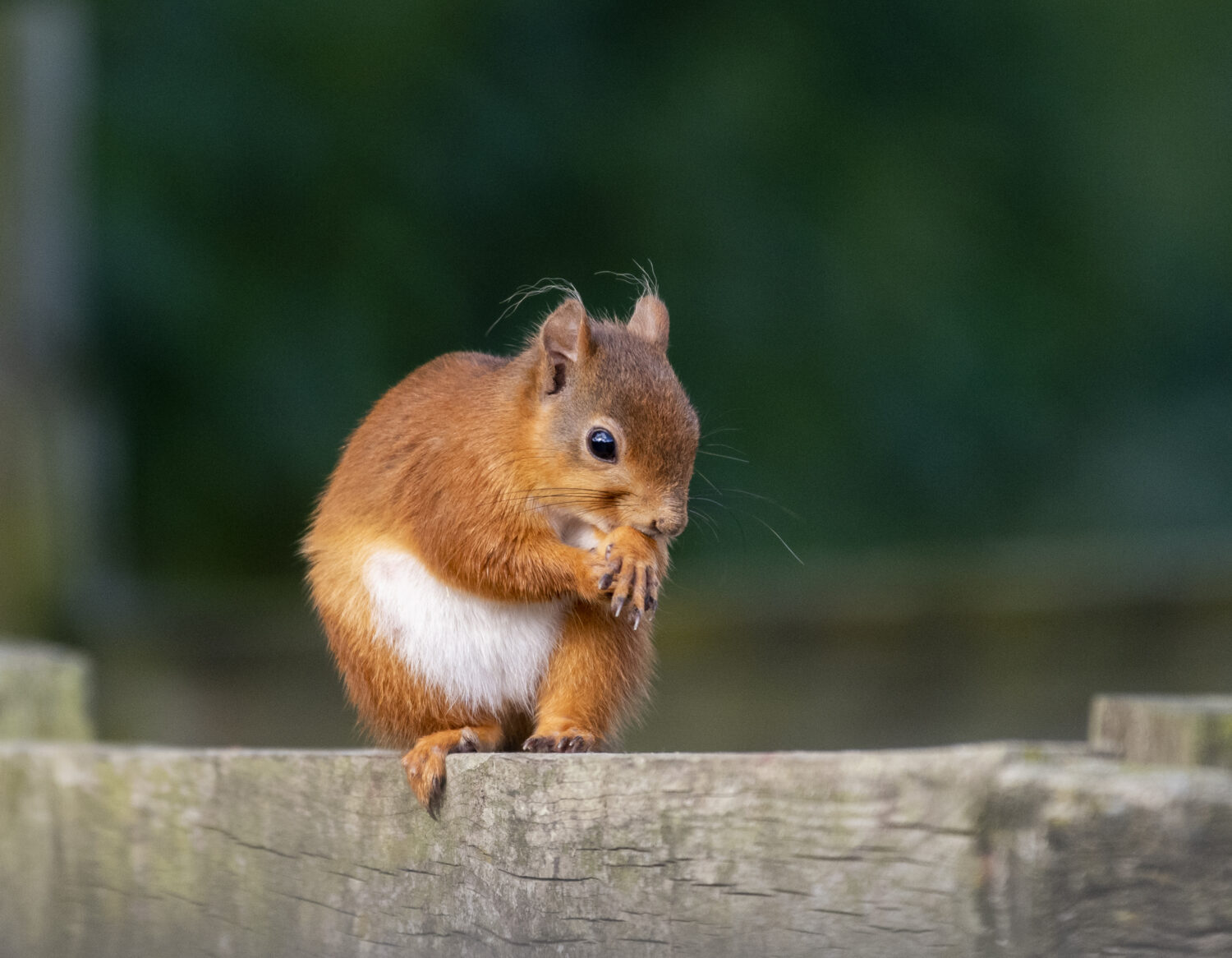Northumberland is one of the best places to see the now rare Red Squirrel in England. Postgraduate researcher and local naturalist, Ian Glendinning, shares how he’s monitored a small population of Red Squirrels close to his home in the Upper Coquet Valley.
In May 2021, for the first time in the 20 years I have lived in this part of the Upper Coquet Valley, I saw a Red Squirrel in the garden. I’d seen them in the area, but only occasionally. It was enchanting to see this mature and heavily pregnant female performing acrobatics on a bird feeder. That same day I put up a squirrel feeder and found some hazelnuts to stock it. The next day she was back, and on successive days others appeared. I then put up another feeder about 100 metres away, and within a few hours another red appeared.
Over the next six months I photographed and filmed 15 individual Red Squirrels, including six juveniles. In January I began to investigate the surrounding woods to try to assess the population density, but I found there were none. Instead, I found to my surprise that there were only Grey Squirrels. I then realised that the reason I had seen so many reds in such a small area was because they were being squeezed by the growing population of greys. I set about dealing with this situation. To date, have removed 187 from four woods, most of them between January and May.

I set up 12 feeders, cameras and five hides in various locations. It was exciting to find that in one wood alone eight juveniles were born. To date, all have survived and continue to visit the feeders. My estimate is that there are now over 50 Red Squirrels and no greys apart from the occasional incomer. It is a continuous job dealing with them. Unfortunately neighbouring woodland is not subject to any control measures and will not permit any. Cases of reds contracting Squirrel Pox Virus has arisen, most likely through contamination from grey incursions.
Studying Red Squirrel Populations
This population of Red Squirrels has provided me with the opportunity to study them for a post graduate project. I’m attempting to develop a system of identification for individuals to chart their range and territory. Especially for juveniles after leaving the drey. Generally, the only way to track these squirrels is by PIT tags or collars, both of which are invasive and require trapping the squirrels and subjecting them to handling. In addition, these methods are expensive. Working on a system of high-resolution images from DSLR camera traps, hide photography and high-definition trail cameras situated close to feeders, it has been possible to identify squirrels through unique characteristics throughout the moulting periods.
This is leading to some interesting results plus additional observations on the behaviour and food preferences of individuals, the prevalence of burying and caching different foods by individuals and the interactions between different families and sexes. Although extremely time consuming, so far it is holding up and hopefully I will be able to develop it further.

Ian is chair for Coquetdale Squirrel Group. They cover the Upper Coquet catchment area, from around Paperhaugh right up to Byrness and quite a bit eat and west of that line. If you see a red squirrel in that area, you can submit your sightings here, or to your local Red Squirrel Group.